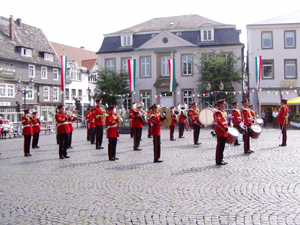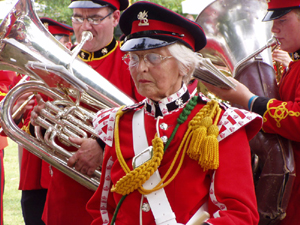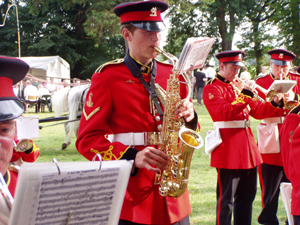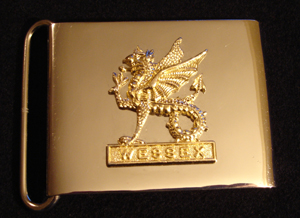
![]()
 |
|
 |
The
band started life as a youth band in 1981 under the inspiration
of bandmaster Martin Davison. Initially the band drew its players
from schools in and around West Dorset and started out as a brass
band, marching band and majorette troop. The band managed to survive
on extremely limited funds and rehearsed in the back of the band
coach and in old village halls to minimise costs. Despite this
hardship the band managed to build up its reputation and take
on more and more engagements. Eventually, the majorette troop
was disbanded to concentrate on the musical aspects. The band
performed at more and more prestigious engagements all over the
south of England and toured parts of Europe. |
| The youngsters in the band eventually matured. In 1990 the British Army invited the band to form as the voluntary band of the Army Air Corps based at Middle Wallop near Andover, who at the time had no regimental band. The band accepted and in a short space of time doubled its membership by recruiting experienced musicians from all over the south coast of England from Dorset to Portsmouth. |
 |
 |
Without delay the band began performing at official engagements as the Voluntary Band of the Army Air Corps. These commitments escalated when in 1991 the Gulf War commenced and the majority of full time army regimental bands were called up for active service in Kuwait and Iraq. During this period the band was one of only a handful of Army bands left in the UK and took on official engagements the length and breadth of the country. One of the most prestigious engagements involved performing for HRH the Prince of Wales and HRH the Duke of Kent. |
| As part of national defence cuts in 1993 the Army decided to rationalise its regiments and disband the volunteer band in order to create a full time regimental band that combined several other serving regimental bands. Undeterred by this, the band set out to continue its music making and reform once again as the Wessex Military Band. The Ministry of Defence repaid its gratitude to the band by providing financial assistance in reforming as the Wessex Military Band and allowing the band to use the recently decommissioned ‘Wessex’ regiment emblem with its distinctive Wyvern. |
 |
 |
From 1994 the band continued to flourish under the baton of bandmaster Martin Davison, performing at international music festivals all over Europe and representing the UK on many different occasions. The band performs at over 40 engagements annually and has a strong base of members of all ages and abilities, ranging from absolute beginners to ex-military musicians and music professionals. In 2006 bandmaster Martin Davison decided to get away from it all after 25 years of running the band, to retire to Austria with his wife. This is not the last the band will see of Martin and expects him to make appearances again in the future. The band is fortunate to have in its ranks people willing to take over the day to day running of the band and several extremely experienced conductors willing to take the helm. |
 |
|
The band wears a distinctive cavalry style scarlet tunic that has yellow or gold piped braiding on the epaulettes and cuffs, depending on rank. The higher ranks have gold detailing the higher the rank the more detailing is incorporated into the tunic. The tunic is adorned with a white belt with square silver buckle and white ammunition bag that doubles well as a music pouch. The band also wears gold dress cords on the left shoulder. The corps of drums wear a similar scarlet tunic with white ribbon trim and winged shoulder pads. They also wear a white belt with a round gold buckle. The dress cords are yellow rope rather than gold. In addition the drummers carry silver bugles. All ranks in the corps of drums have the same style tunic. |
 |
 |
Both the corps of drums and the band wear royal number one peaked caps that are black with a red band, black trousers with a red stripe and black army issue boots. Interestingly, a cavalry style tunic is cut at the hem rather than sown for historical military reasons; this signifies the hasty formation on the battlefield of cavalry units from soldiers in infantry units. The infantry men would cut their long tunics off at the thigh area to allow them unrestricted movement when mounted on horse back. |
The adopted badge for the Wessex Military band is the Wyvern. It is an ancient symbol that dates back to pre-Norman times, and is closely associated with the old kings of Wessex. It is a two-legged, winged dragon with a barbed tail. "Wyvern" is derived from the Old French 'guivre', meaning viper
|
 |